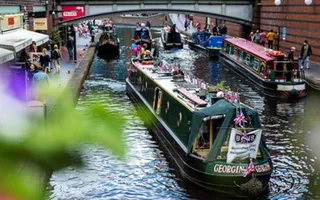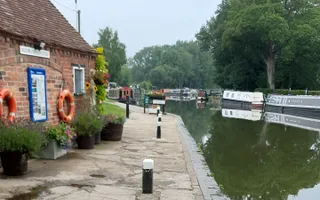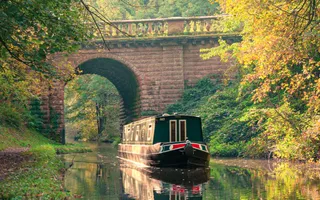Addressing the basics
We are keeping our locks and swing bridges better maintained and easier to use, and undertaking less unplanned stoppages that disrupt your cruising.
Read the video transcript
We're committed to maintaining navigations for boaters and over the last year we've emphasised this with our Better Boating Plan, which includes our commitment to clear our backlog of broken paddles by spring 2026 and to ensure that any new paddles that break are fixed within 4 weeks. We're making really good progress addressing the outstanding issues and getting quicker fixes so that your boating experience is improved and there are fewer restrictions as you travel around the network.
We're also committed to improving our planned preventative maintenance. Our teams have been identifying issues earlier and then going back to make sure they're fixed quicker so there are fewer restrictions for boaters. This focus on plant preventative maintenance not only improves the day-to-day experience you have, but it also makes our network more resilient for the future.
Planned preventative maintenance
Our efforts
Since the plan’s launch, teams across the Trust have been:
- Reprioritising local and national work plans
- Renegotiating external contracts to focus on what delivers best value for boaters
- Revisiting internal priorities and structures to better support the four themes
- Embedding customer-focused decision-making across all boating services
Environmental challenges
2024-2025 brought some of the most severe environmental challenges our waterways have ever faced. While the year will be remembered for its unprecedented drought conditions, it also saw a series of powerful storms that caused widespread disruption and damage across the network.
Storms Bert, Darragh and Éowyn struck within just three months, bringing flooding, fallen trees, damaged infrastructure, and significant challenges for our teams and waterway users. In late November, Storm Bert brought widespread flooding, tree falls, and winds strong enough to set boats adrift, while also disrupting essential winter maintenance works. Storm Darragh followed in December, impacting at least 29 waterways and felling around 400 trees across the West Midlands alone.
The severe weather over the New Year caused further flooding and landslips on the Huddersfield Narrow Canal, leading to extensive closures and repair work expected to cost up to £1 million. In total, these storms resulted in hundreds of navigation blockages, damaged assets, and around £10 million in emergency repair costs. Our dedicated teams worked tirelessly, completing more than 23,000 hours of emergency and remedial work to keep the network safe and operational.
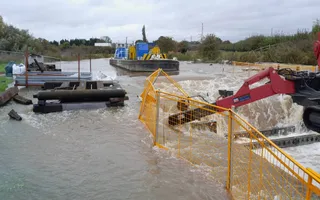
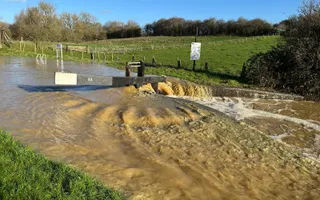
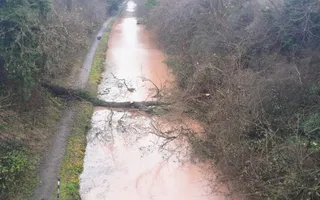
Floodwaters overwhelm our repair works at Ratcliffe Lock on the River Soar
In contrast, shortly after the aftermath of Storm Éowyn, we were facing a very different challenge, with the driest Spring on record for over a century. The unprecedented drought conditions continued into summer, resulting in significant and widespread impact on our reservoirs, rivers, canals, infrastructure, ecology, and, of course, our boating community. With water levels reaching record lows, around 400 miles of navigable water over 20 canals have experienced restrictions or temporary closures, a difficult but necessary measure to protect the long-term viability of the network.
Our teams have worked tirelessly to manage water resources, doing all they can to keep navigation open for as long as possible. Our dedicated hydrologists have played a critical role, making complex, often difficult decisions based on real-time data, reservoir holdings, and detailed forecasts and usage projections. Throughout, they have kept the needs of both leisure boaters and business boating customers front and centre when planning water restrictions and closures.
Unfortunately, the impact of drought extends beyond navigation. Prolonged low water levels place significant strain on our ageing infrastructure. In many cases, new issues have emerged as historic assets are exposed to conditions they were never designed to withstand. In addition, our planned preventative maintenance has faced delays, with workboats unable to access certain areas due to closures, and operational teams redeployed to support urgent water management and canal safeguarding efforts.
While 2025 has been immensely challenging, it has also underscored the dedication, adaptability, and resourcefulness of our teams working across the network, doing everything possible to respond to the climate pressures now facing our historic waterways.
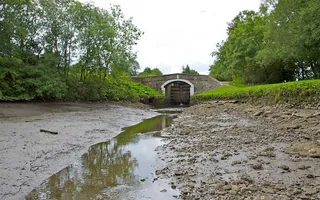
Explore the rest of the Boater Report
Last Edited: 23 October 2025
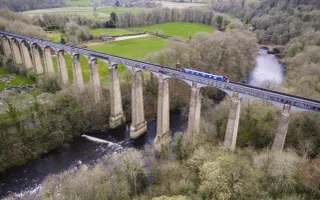

Stay connected
Sign up to our newsletter and discover how we protect canals and help nature thrive


